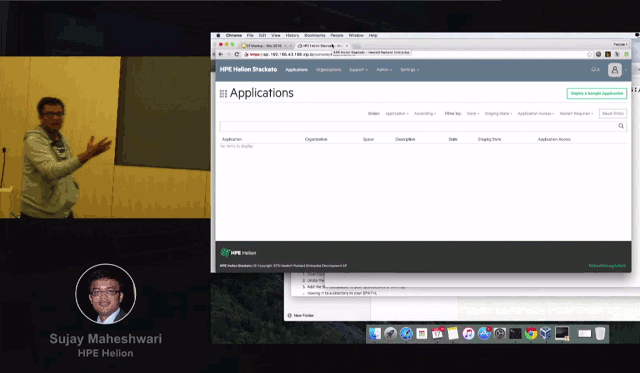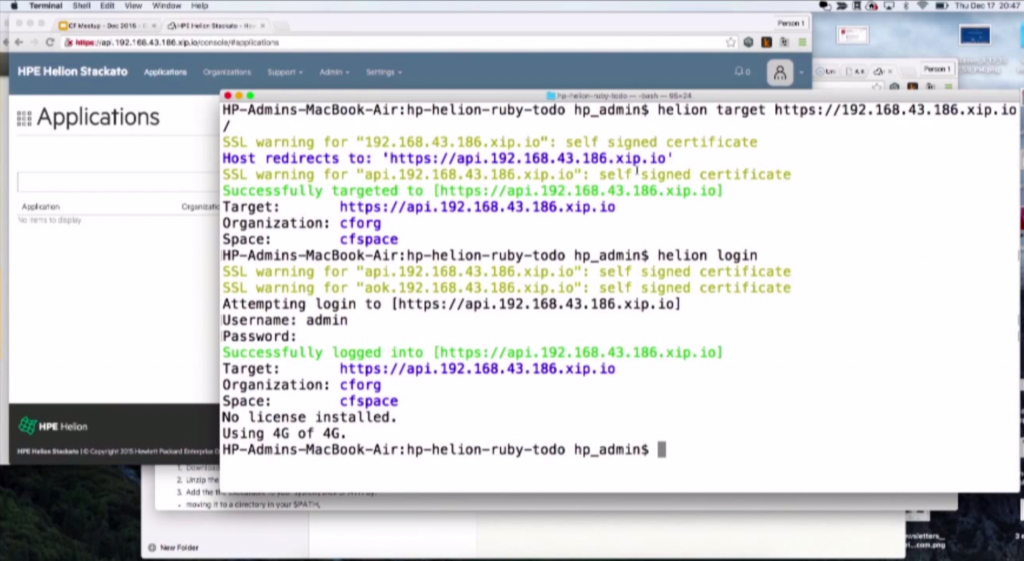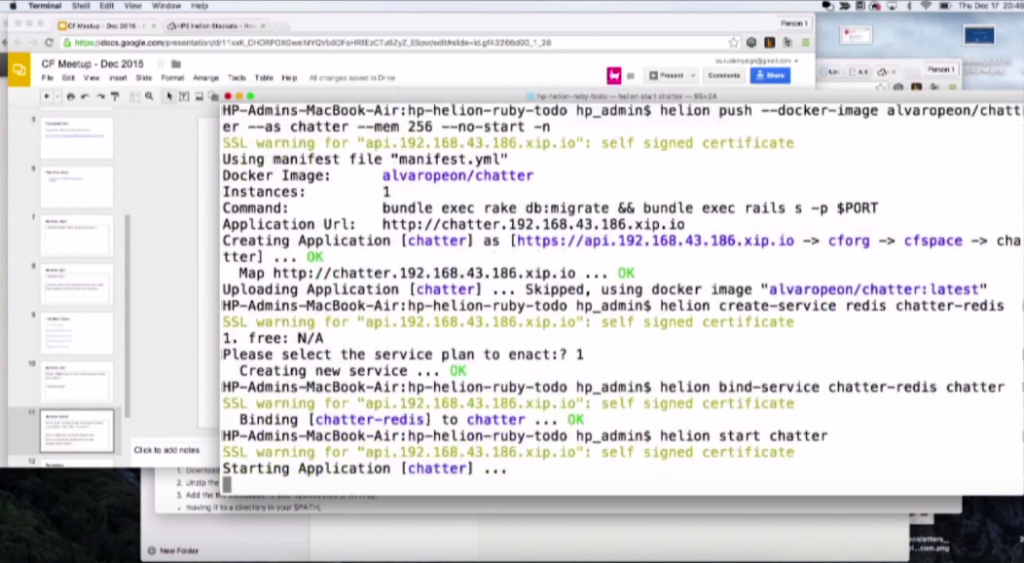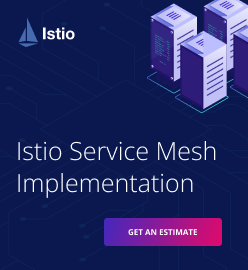Demo: Configuring HPE Helion Stackato on a Laptop

For exploring the capabilities of a Cloud Foundry-powered PaaS from HPE, the evaluation version of the product that runs in local environments is available. Import a preconfigured Helion Stackato VM image into VirtualBox and get started; works on Mac, Windows, and Linux. Find out more from the article.
Preface
In 2015, Hewlett-Packard acquired Stackato—a PaaS solution built on Cloud Foundry and Docker—from ActiveState. When the tech giant split into two companies, Stackato became a part of the Hewlett Packard Enterprise (HPE) portfolio.
Today, HPE ships the HPE Helion Platform that combines both its IaaS and PaaS technologies. The PaaS offering, particularly, comes in two flavors: HPE Helion Stackato and HPE Helion Development Platform. While the former supports multiple IaaS products, such as AWS, Azure, and VMware, the latter is a version of HPE Helion Stackato tightly integrated with HPE infrastructure based on OpenStack services.
HPE also announced the technical preview of HPE Helion Cloud Foundry, a certified implementation of Cloud Foundry, in December 2015.
Running a VirtualBox micro cloud
At the recent CF Beat meetup, Sujay Maheshwari presented HPE Helion Stackato working on a laptop. In a short demo, he showed how to configure your Helion Stackato micro cloud for local development and testing as well as how to push a sample application to it via Docker.
Before deploying applications to Helion Stackato, you need:
- VirtualBox
- the Helion Stackato VM image for VirtualBox
- the Stackato client
After performing the initial setup, connect and log in to Helion Stackato with the stackato target and stackato login commands to start deploying your applications. During the presentation, however, Sujay used the helion client instead of stackato.

For the detailed information on how to run HPE Helion Stackato on your local machine, check out the following tutorials prepared by the HPE team:
Deploying a sample application via Docker
Docker images can be pushed to Helion Stackato. In the second part of the demo, Sujay deployed a Docker application and bound a data service to it.

For the stackato client, the commands are:
stackato push --docker-image alvaropeon/chatter --as chatter --mem 256 --no-start -nstackato create-service redis chatter-redisstackato bind-service chatter-redis chatterstackato start chatter
With the evolution of Cloud Foundry and its growing adoption among enterprises, the demand for a smaller version of the platform has become evident. Currently, a number of solutions for experimenting with Cloud Foundry functionality are available from different providers of the PaaS.
The mentioned scaled-down version of HPE Helion Stackato for local environments, which does not require BOSH to get started, complements well the existing collection of micro Cloud Foundry offerings.
For OSS Cloud Foundry, BOSH Lite remains the basic method of work with local PaaS installations. In addition, the Lattice project that includes three Cloud Foundry components—Diego, Loggregator, and Router—resides in the Cloud Foundry Incubator repository.
Related reading
Related video









